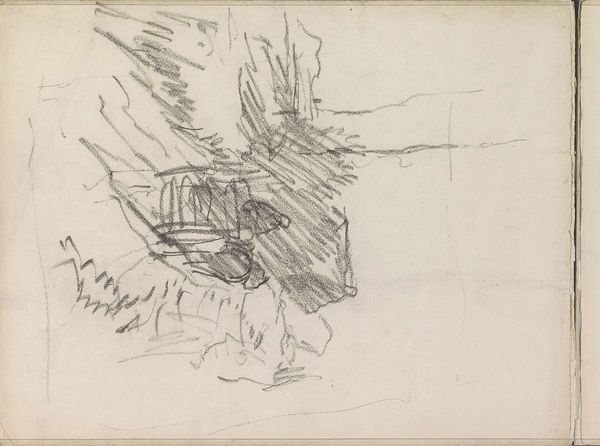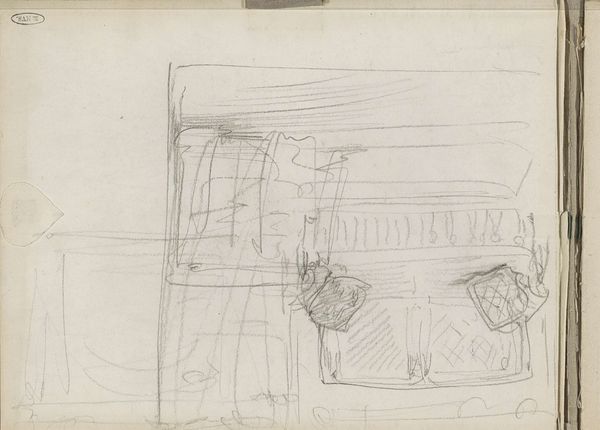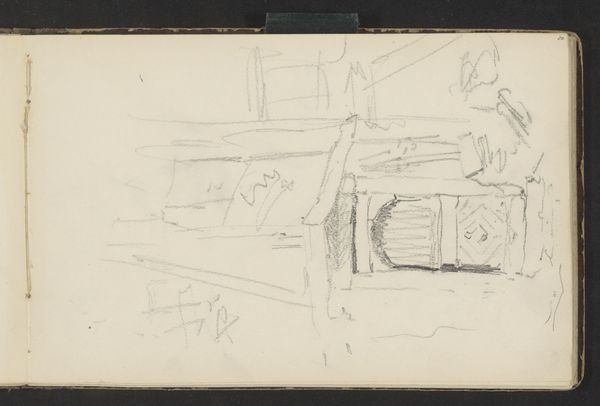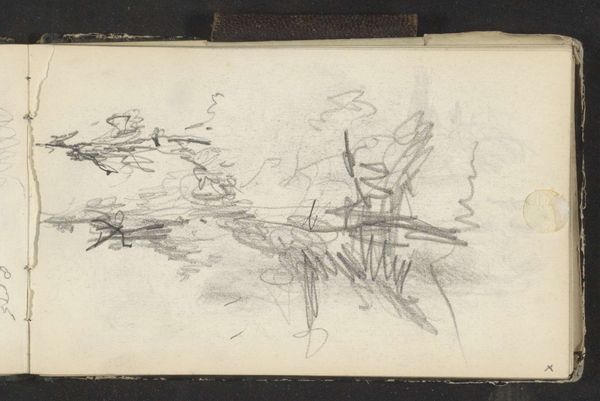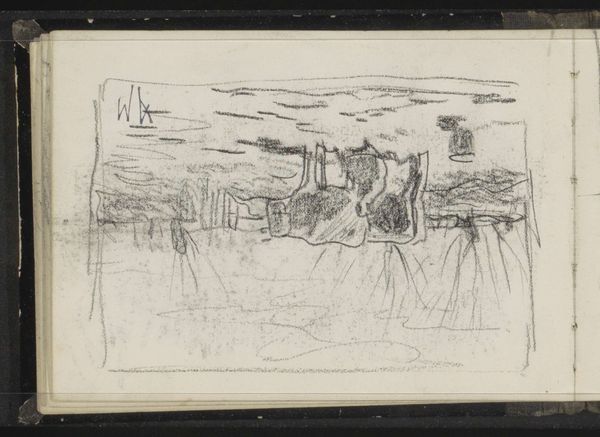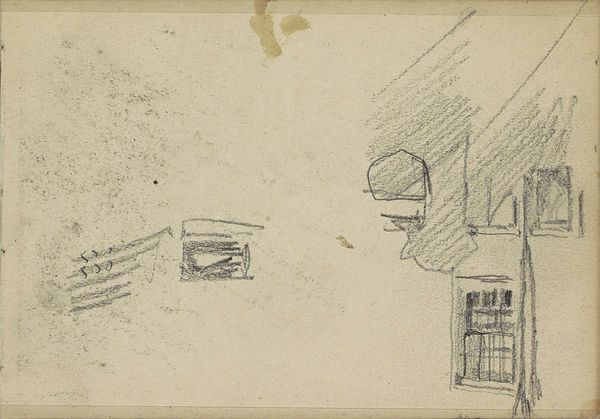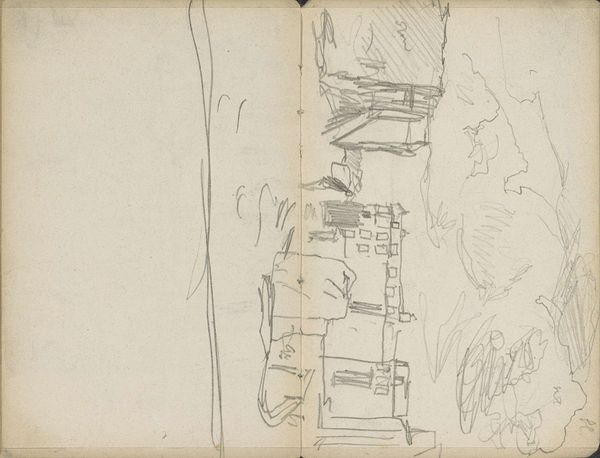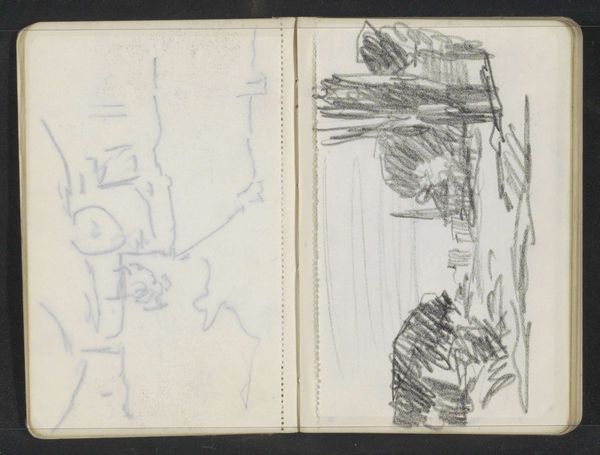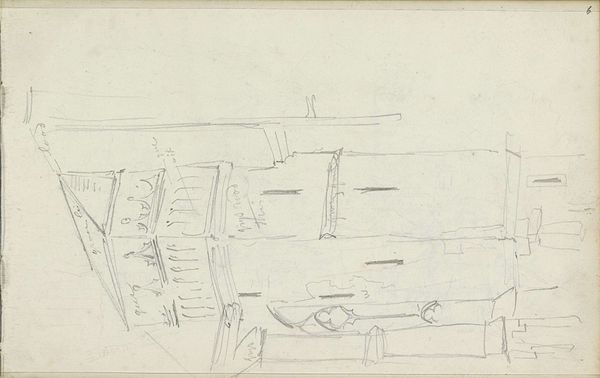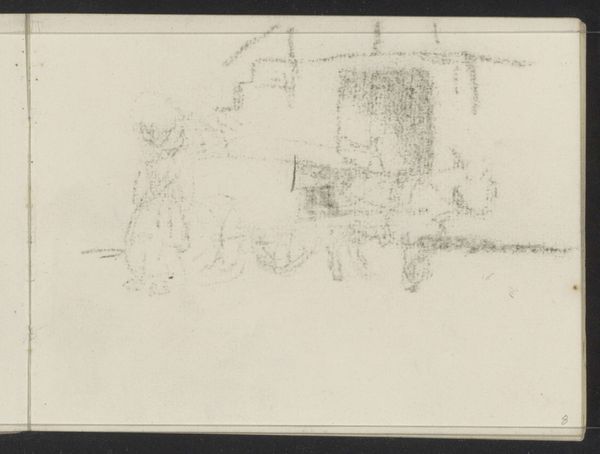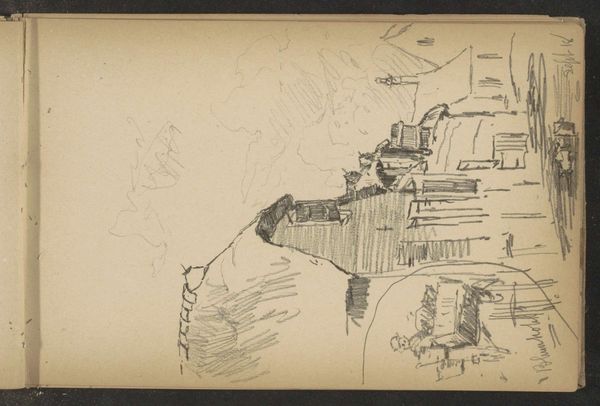
Weiland met een hek bij een sloot en een paardenkar op een landweg 1848 - 1888
0:00
0:00
drawing, pencil
#
drawing
#
quirky sketch
#
pen sketch
#
sketch book
#
landscape
#
personal sketchbook
#
sketchwork
#
pen-ink sketch
#
pencil
#
pen work
#
sketchbook drawing
#
storyboard and sketchbook work
#
sketchbook art
#
realism
Copyright: Rijks Museum: Open Domain
Curator: At first glance, the eye feels drawn to the immediacy, a kind of raw honesty in this sketchbook work. Editor: I agree. There’s a starkness to the line work that speaks of transience. Curator: This double-page pencil and pen sketch, held in the Rijksmuseum, is by Anton Mauve and is titled "Weiland met een hek bij een sloot en een paardenkar op een landweg". Created between 1848 and 1888, it translates to "Meadow with a fence by a ditch and a horse cart on a country road." Editor: 'Fence' being the operative word here, for me. These are working structures; their rustic construction dictates the agricultural and economic function of the landscape. Curator: Absolutely. Fences historically signify boundaries, both physical and social. Here, we see them dividing and structuring the land, controlling access, maybe even whispering stories of ownership and labor. How does this contrast, do you think, with Mauve’s broader symbolic themes? Editor: Well, Mauve, being a significant influence on Van Gogh, clearly understood the emotional weight rural scenes could carry. One must remember that in 19th century Netherlands the rural population experienced great change, caused by rapid urbanization and agricultural industrialization. The landscape that he is showing, and how it is worked on by people, symbolizes loss and change but also tradition and timelessness. Curator: True, though on one page there are just sketchy fences without an immediate social environment. Could it be hinting at the artist’s understanding of memory or imagination? Fences guarding ideas rather than fields? Editor: Or it reflects Mauve's process, working out the composition. His sketches weren't autonomous creations but preparatory material for fully realized paintings, goods that had value on the 19th century Dutch market. Curator: Fair enough, the fence becomes more of a device! Looking closely, each fence shows different details: there are lines on the woodwork. Editor: Absolutely. These textures become tactile, drawing us into the physical reality. But it’s a reality filtered through Mauve’s eye and his hand and reproduced in pencil. That’s something precious and important, the way his subjectivity has a profound effect. Curator: A productive, and material, tension to end on. Editor: Indeed, Mauve's art reveals that even a quick sketch contains social truths as it transmits the world's symbols through the filter of memory, material process and making.
Comments
No comments
Be the first to comment and join the conversation on the ultimate creative platform.
